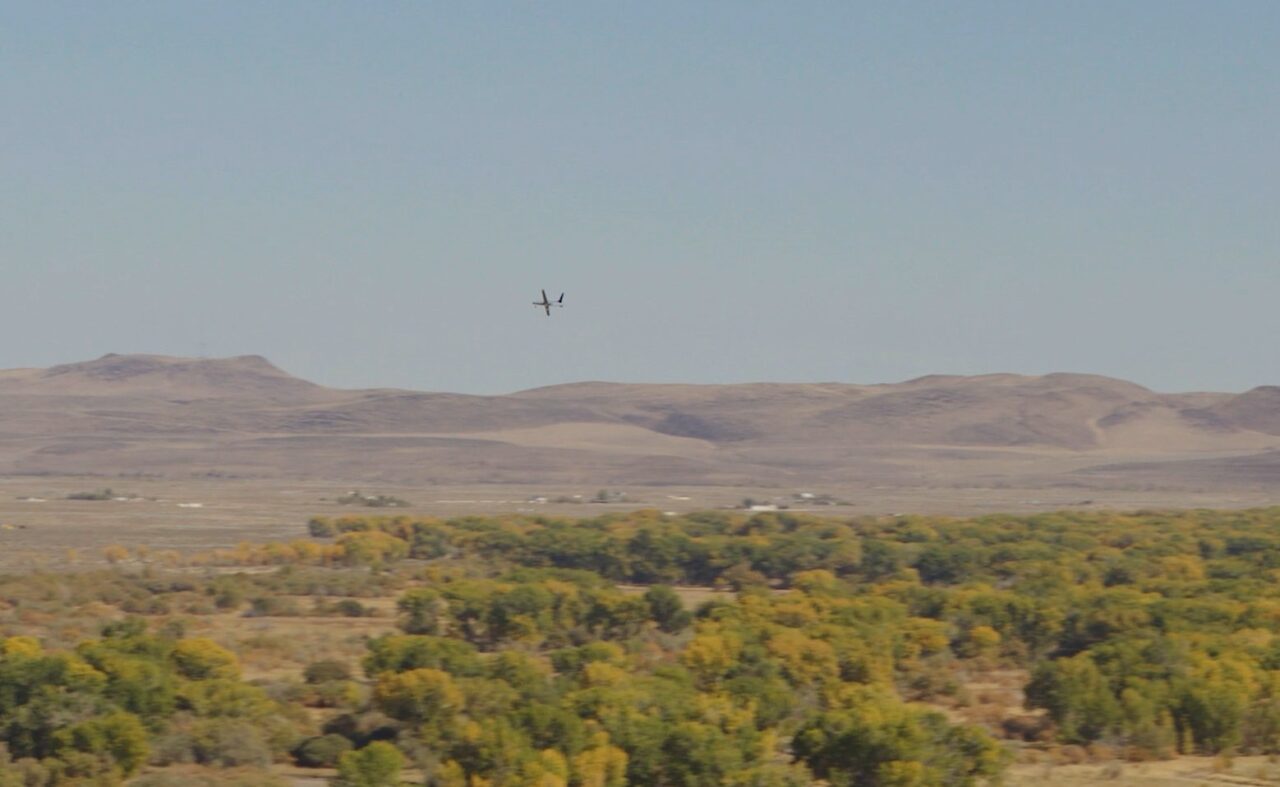
The FAA recently granted approval to Iris Automation for beginning beyond-visual-line-of-sight drone flights in Nevada. (Photo: Iris Automation / The City of Reno Fire Department)
Avionics technology company Iris Automation has been granted approval by the Federal Aviation Administration (FAA) for flying automated drones beyond visual line of sight (BVLOS) in an unpopulated area near the city of Reno, Nevada. The City of Reno was one of nine lead participants that worked with the FAA during the Unmanned Aircraft Systems (UAS) Integration Pilot Program, which concluded in Oct. 2020.
The FAA immediately resumed its work in partnership with the City of Reno as part of a new program called BEYOND, building off of the groundwork established during the UAS Integration Pilot Program. Primarily, BEYOND aims to address the challenges associated with UAS integration. The collaboration with Iris Automation serves, in part, to improve rescue response times during the Reno Fire Department’s river rescue operations. The expectation, according to the City of Reno, is that “utilizing UAS will have a significant positive impact on saving the lives of victims and reduce the resources required to conduct these operations.”
FAA approval was awarded to Iris Automation for the company to utilize the Casia X, its advanced detect-and-avoid (DAA) technology, and explore its ability to increase safety in rescue operations. The Casia system is capable of operating onboard an aircraft as well as in a ground-based configuration. According to the announcement from Iris, “onboard sensors like Casia X, combined with carefully designed concepts of operation, provide a cost-effective and scalable solution, enabling high levels of safety.” In coordination with the FAA, Iris has worked to develop its DAA technology to mitigate risks of aircraft collisions and to facilitate integration of unmanned aircraft into the airspace.
Of the 41 water rescues performed by the Reno Fire Department each year, 85% of them occur on the Truckee River downtown, and 10% occur in the dark. Rescue operations in water are already extremely dangerous both for the victims and for the rescue team, but in moving water like a river, the level of danger is even higher. This is where a UAS aircraft could help—enabling the BVLOS capacity for rescue operations means that fewer fire department staff members will be put into dangerous situations, according to the Reno Fire Department. “Drones allow us to launch into flight safely at a moment’s notice, with new and more effective approaches to making our downtown river corridor safer while also saving time and money,” said Reno’s Fire Chief, Dave Cochran. He hopes that this FAA approval for BVLOS drone operations will make it easier for other fire departments and public agencies to incorporate UAS into their operations.

Iris Automation’s Casia X detect-and-avoid technology may increase safety for the Reno Fire Department during search-and-rescue operations. (Photo: Iris)
By participating in the BEYOND program and collaborating with the FAA, the City of Reno engages with a variety of both public and industry stakeholders, and it has the opportunity to establish safety and performance standards for BVLOS operation. “The BEYOND program,” commented Iris CEO Jon Damush, “is an important example of constructive government and industry cooperation, and a testament to the forward-thinking leadership of the City of Reno. We’re thrilled to work side by side with the FAA and our home city, delivering our technology to enhance the daily lives of our community and beyond.”
UAV Navigation and Iris Automation started a partnership in August last year to augment the Casia X system with UAV Navigation’s VECTOR autopilot system and enable advanced DAA operations for autonomous aircraft. The Casia software, which utilizes artificial intelligence and computer vision for BVLOS operations, had recently been improved in performance and flight data uploads. The VECTOR autopilot system adds the ability for aircraft to avoid collisions when remote-control datalinks may be lost.
A few weeks after the partnership with UAV Navigation was announced, Iris entered into an agreement with Swoop Aero in order to create a BVLOS drone navigation system that would be incorporated onto Swoop Aero’s FAA-certified Kite aircraft. Iris’s CEO Jon Damush remarked in the announcement, “Demand for these use cases is highest in regions with stringent air safety standards, and avoiding mid-air collisions is the most important aspect of reducing air-risk.”